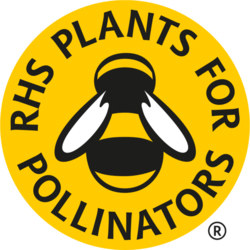"One in three mouthfuls of food we eat is dependent on pollination"
Many fruit and vegetables need to be pollinated by insects for fruits to form. Strawberries, apples, raspberries as well as broad beans, peas and courgettes are just a few of the edible plants that rely on visiting insects to take pollen from flower to flower – a process known as pollination. This then leads to fertilisation and fruit formation. If there are not enough insects around to do this work then fruit may not form. Learn more about pollination using our Plant pollination and reproduction information sheet.
Commercially fruit farmers import bumble bees to ensure their crops are pollinated. We as gardeners can encourage bees and other insects by growing flowers in the garden that are attractive to them. Planting a range of native and non-native plants that flower throughout the year helps early pollinators like solitary bees. This will then ensure you have good pollination for your fruit and vegetable crops and so a bountiful harvest.
The RHS have done research into many plants found in the garden, including wildflowers and plants from around the world. We have a trademarked logo that can be found on plants that are good for pollinators in garden centres, nurseries and DIY shops across the UK. You can find out more about plants for pollinators and the work the RHS has done in this area by following the link below.
The RHS carried out research into whether native or non-native plants best support invertebrates including pollinators. The results of this research and further information can be found here.
Use our Pollinating insects spotter guide to identify pollinators found in the garden or local area.
You can also use these helpful guides on Encouraging wildlife into your school garden and Plants for a wildlife garden to make your garden buzz with exciting pollinators and other wildlife.
